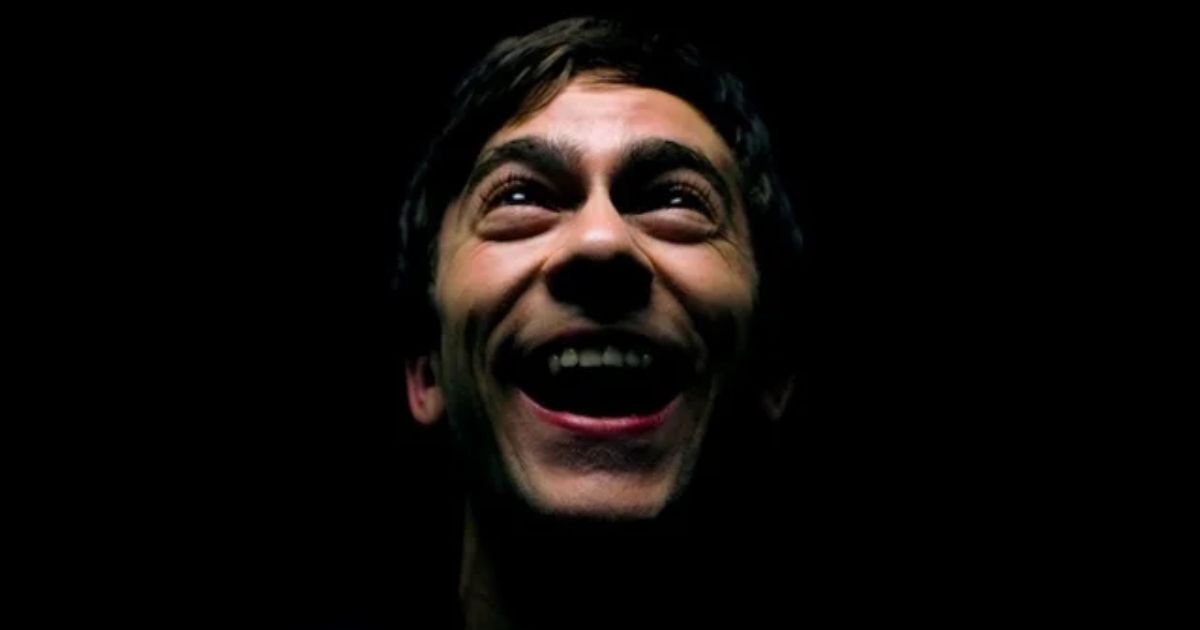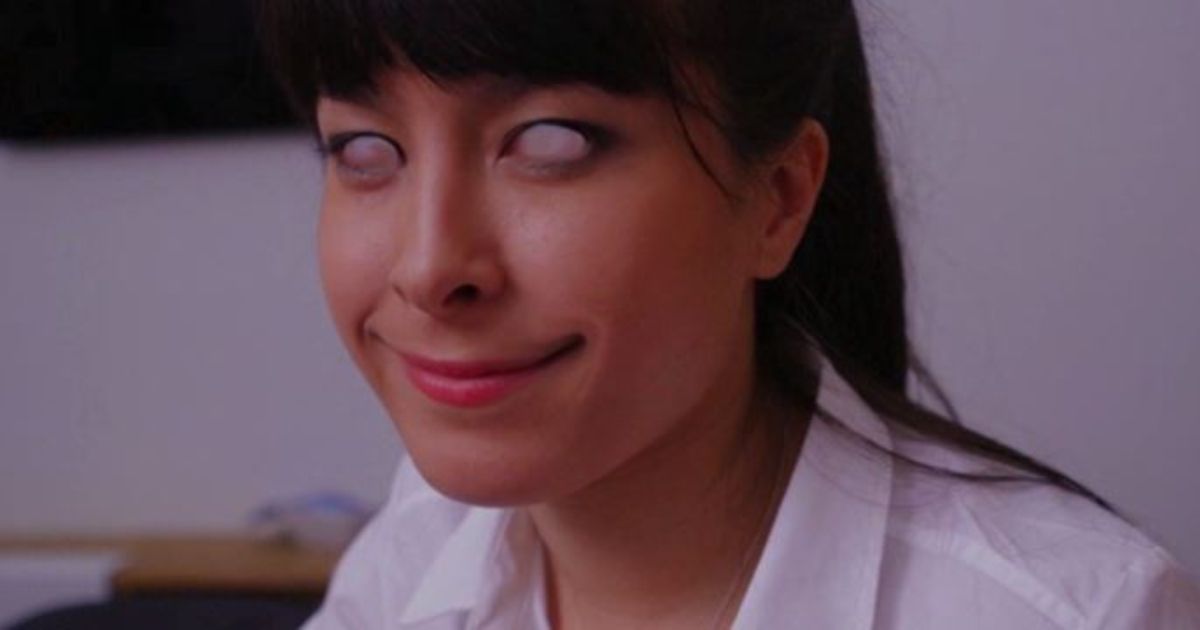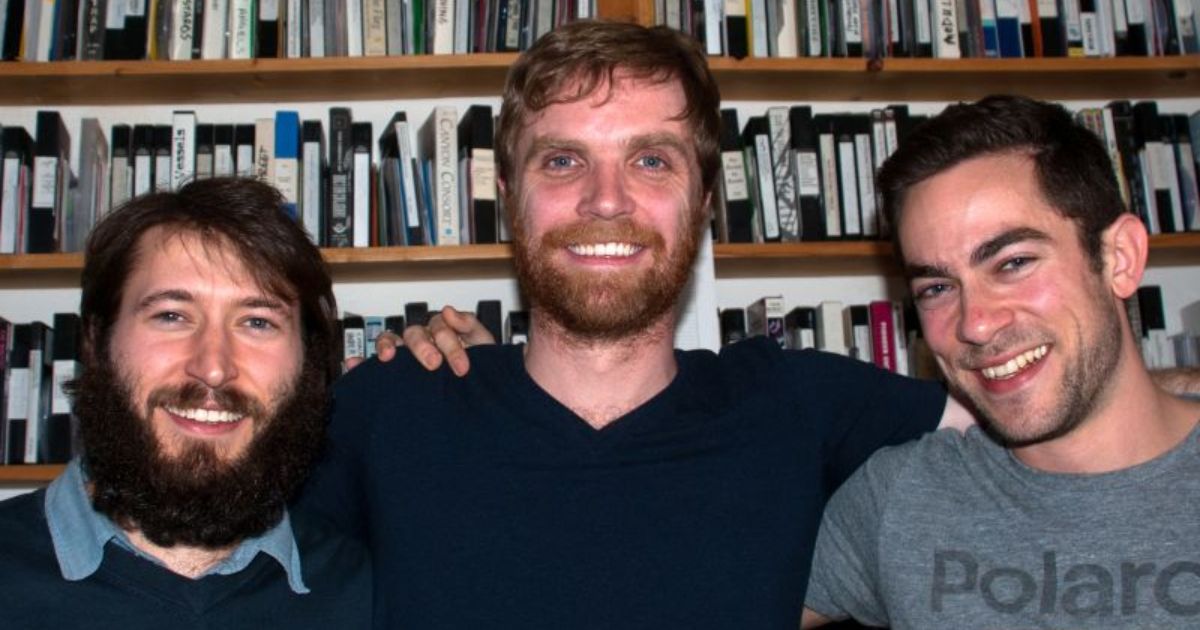Every year, horror fans and aficionados attempt to take on the daunting task of watching a horror movie for each day in the month of October. Aptly named 31 Days of Horror, the challenge usually consists of viewers watching a mixture of their favorite classics, recent releases, and popular genre staples that may be new to them. In celebration of the spooky season, we at MovieWeb have curated our own suggestions for the month, providing a plethora of favorites from our contributing writers and editors. Today, we kick off Day 25 with the underrated DIY horror film, They Look Like People.
It was Robert M. Pirsig’s observation that, “When one person suffers from a delusion, it is called insanity. When many people suffer from a delusion it is called religion.” Obviously that’s a harsh generalization, but it gets to an ultimately self-contradicting truth. Social constructivism is the theory of knowledge that truth claims are created only when socially agreed upon; at its most epistemologically reductive, it’s ‘majority rules.’ So when one man believes that people are being replaced by a terrifying demonic presence, and that he’s one of the chosen defenders of humanity in this global horrorshow, we would call it a delusion even if he calls it truth. Meanwhile, where are our blinders? What do we accept as real, and where are we deluded?
These are some of the thoughts that arise when watching They Look Like People, a wonderful indie gem that doesn’t spell anything out, but lets so many ideas and horror simmer beneath the lo-fi surface. Questions about how mental health determines identity, and how identity determines perception, are explored with elliptical delicacy and even warm humor. In many ways, though, the film is a compassionate buddy comedy about two young men having an identity crisis, and they may not get out of it alive.
MacLeod Andrews Sees and Believes the Scariest Things in They Look Like People
They Look Like People begins with one of the most quietly disturbing openings in horror history. It’s based on a dream from filmmaker Perry Blackshear, and the scene perfectly recreates the feeling of a nightmare or sleep paralysis. A man is lying in bed with his partner. It’s very dark, but shapes are visible. She is right next to him, her back to him, and he sees the black void of the back of her head mere inches away. Or is that her face? What has happened to her face?
The sound design is crucial here and throughout the film. Blackshear will often implement odd sound effects (a heater, a tea kettle, wet socks) and elevate them above how they should normally sound. He’ll also completely drop out any sound or music at all. This is always a leap of faith in a film; horror movie scores in particular tend to be manipulative, telling an audience how to feel or when to jump. Blackshear doesn’t do that at all, trusting what’s on-screen and the great performances to do the heavy lifting. It works.
MacLeod Andrews is phenomenal as Wyatt. We jump from his night terror to some time later. He has ended his engagement with his partner, grown his beard out, and is seemingly unhoused, ultimately coming to a childhood friend and crashing at his small apartment. Wyatt thinks that there is a plot, some kind of shape-shifting infestation, some darkness that is taking over people and replacing them, but he’s one of the few people alive who can tell. He hopes others are like him, or that he can convince more. He receives phone calls and voice messages encouraging him and guiding him. A new identity has been thrust upon him, and his old world is shattered.
Evan Dumouchel Plays a Man Who Is Not Himself
Wyatt’s best friend, Christian, is played by Evan Dumouchel, and they’re a phenomenal pair. The duo have starred in every Blackshear film, and are honestly two fo the most underrated, talented, and intellectually and physically attractive actors you’ve never heard of. Here, Dumouchel gets douchey, which can sometimes feel awkward and unnatural, but that’s the point.
Christian is a stunted young adult who is trying to transform himself into something he’s not; he wants to be some kind of cross between Barney Stinson in How I Met Your Mother and Tom Cruise in Jerry Maguire, but he’s not that at all. He’s desperately insecure about looking weak, ugly, or stupid, and so he has a pull-up bar in his bedroom, compulsively posts notes like “Believe in Yourself” around the house, and listens to a disturbing self-help tape that tells him how to dominate others. He wants to win friends and influence people. He wants to get ahead in advertising.
But with Wyatt, Christian is himself, a charming goofball eating cereal in his boxer-briefs. He seems to have fun with Wyatt, and even in such an ominous and disturbing film, the two are funny together and given ample time to simply screw around. Christian’s identity is split, then, by Wyatt, this reminder from Christian’s past of who he really is; he’s not a corporate ladder-climbing, woman-negging, smirking businessman. Frequent Blackshear collaborator and all-around injection of joy Margaret Ying Drake helps grow the Christian character a lot as well, playing an extremely cool co-worker named Mara. Wyatt likes her too. She looks like people.
The Ecstatic Horrors of Religion and Schizophrenia
Of course, things build to a head as Wyatt grows increasingly disturbed by reality, and Christian’s identity crisis fractures his well-laid plans and bogus “Believe in Yourself” hype. A powerful nail gun is involved. An axe and a hammer, too. A little duct tape. Eyes rolled to the back of one’s head. Maybe Christian isn’t who he says he is. Maybe he isn’t people.
Wyatt could be described as a young man suffering with schizophrenia, and They Look Like People is very adept at capturing aspects of that illness, from paranoia and an elevated sense of self-importance, to auditory and visual hallucinations. There is also often a religious connection with schizophrenia, which makes sense — the detached voices of auditory hallucinations can easily be mistaken for God; the feeling of being chosen is both mental and messianic. Even Jesus is often considered to be either a paranoiac or a schizophrenic according to psychologists like Charles Binet-Sanglé, Oskar Panizza, and William Hirsch. Binet-Sanglé wrote a four-volume series titled The Madness of Jesus, and concluded:
In short, the nature of the hallucinations of Jesus, as they are described in the orthodox Gospels, permits us to conclude that the founder of Christian religion was afflicted with religious paranoia.
Is this not the nature of ecstasy, or ekstasis? Literally “to stand outside oneself,” or “a standoff of outside forces.” The horror of ecstasy, of passion (passio, literally “to suffer”), is a common trait of the religious experience at its extreme (speaking in tongues, convulsing, witnessing visions, hearing God, seeing Satan). It is the schizophrenic experience itself. And that returns us to the phrase, “When one person suffers from a delusion, it is called insanity. When many people suffer from a delusion it is called religion.” This is not to downplay religion, but rather to explain one fundamental truth — we are all deluded. Sometimes it’s just more acceptable.
Your Mental Health Writes Your Story Unless You Let Friends Co-Author It
In They Look Like People, Wyatt’s world comes crashing down, but it isn’t really a choice of his. Whether he’s schizophrenic or chosen to fight some demonic invasion, he isn’t culpable for the reality he’s perceiving, or for the identity that’s washed over him. The same could even be said about Christian. His neuroses and insecurities have warped his perception of reality and himself to the extent that he’s altering his very identity, which in turn affects his reality. It begs the question, how much does mental health dictate our perception of reality? Was Nietzsche just bipolar and Schopenhauer just depressed? Was Plato or Blake schizophrenic? Was Stalin just a narcissist? How much of our personal and collective histories are really just the stories of our mental health, written by illness and neurosis?
So does Wyatt have schizophrenia, or is he right? The truth is worked out in the extremely tense, unpredictable, and dizzying final sequence between Wyatt and Christian. At the end of They Look Like People, reality is revealed as precarious; it’s an individual thing that depends upon your state of mind and disposition, but if we’re to co-exist and not destroy each other, we have to agree on some baseline of reality. It can be difficult and even absurd, like describing the color orange to someone with blindness, but we try with a little help from our friends.
Between lighting and smoking cigarettes in his commentary track for the excellent Blu-ray release of They Look Like People, Blackshear frequently mentions showing scenes in progress to people during the production. After all, he was the cinematographer, editor, writer, director, co-producer, and sound designer of the film, turning the auteur process into DIY solipsism, so he wanted people to keep him in check. “Outside opinions are so important,” he says. It’s a socially constructive way of filmmaking that corresponds to all these aforementioned themes. Blackshear and his merry troupe of indie renegades — Andrews, Dumouchel, Drake — have made multiple films together, and it’s clear that they care about take care of each other while they create these collective hallucinations we call movies. We should only be so lucky in our own lives.
They Look Like People is available on an excellent Blu-ray from Yellow Veil Pictures, and can be streamed on Tubi, Prime Video, Plex, and The Roku Channel, and can be rented on most digital platforms like Vudu, YouTube, and Apple TV. You can find out more here, and follow along with MovieWeb’s 31 Days of Horror via the advent calendar below:
This story originally appeared on Movieweb





